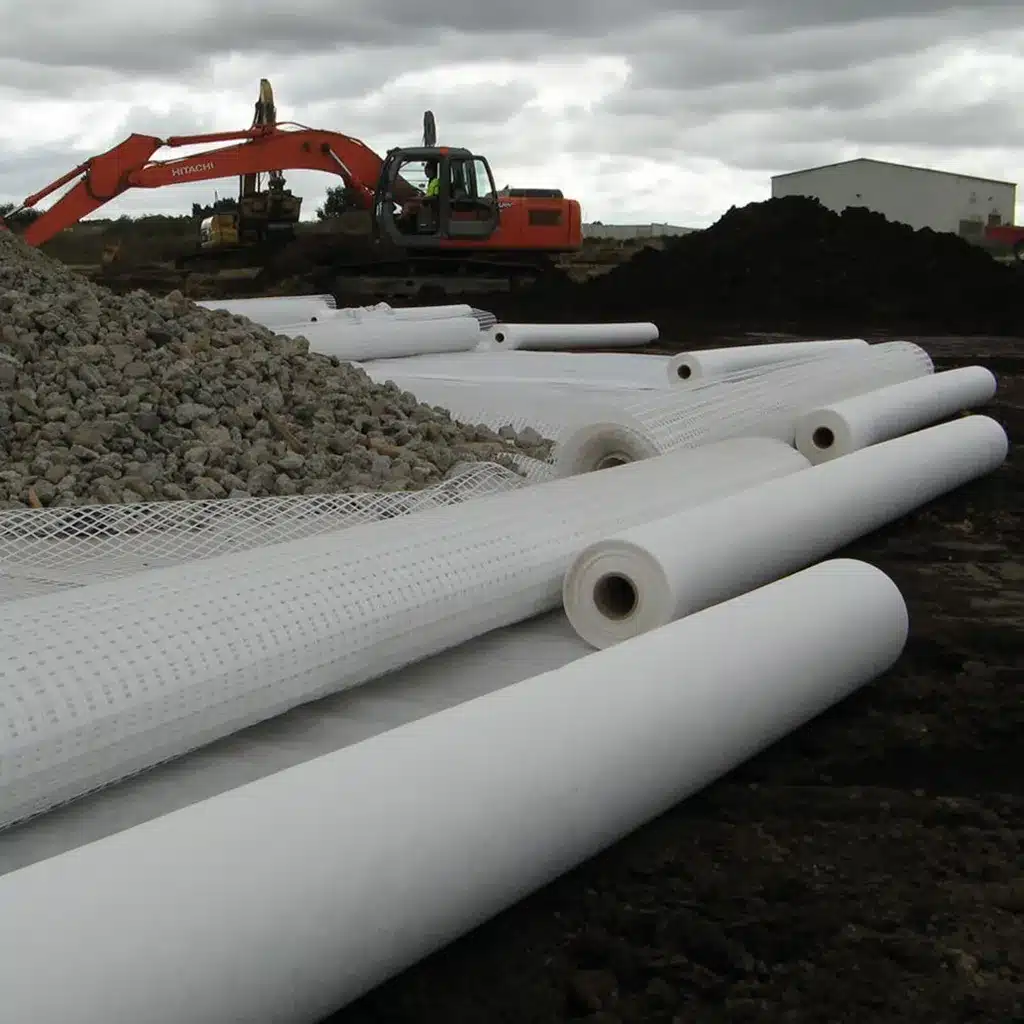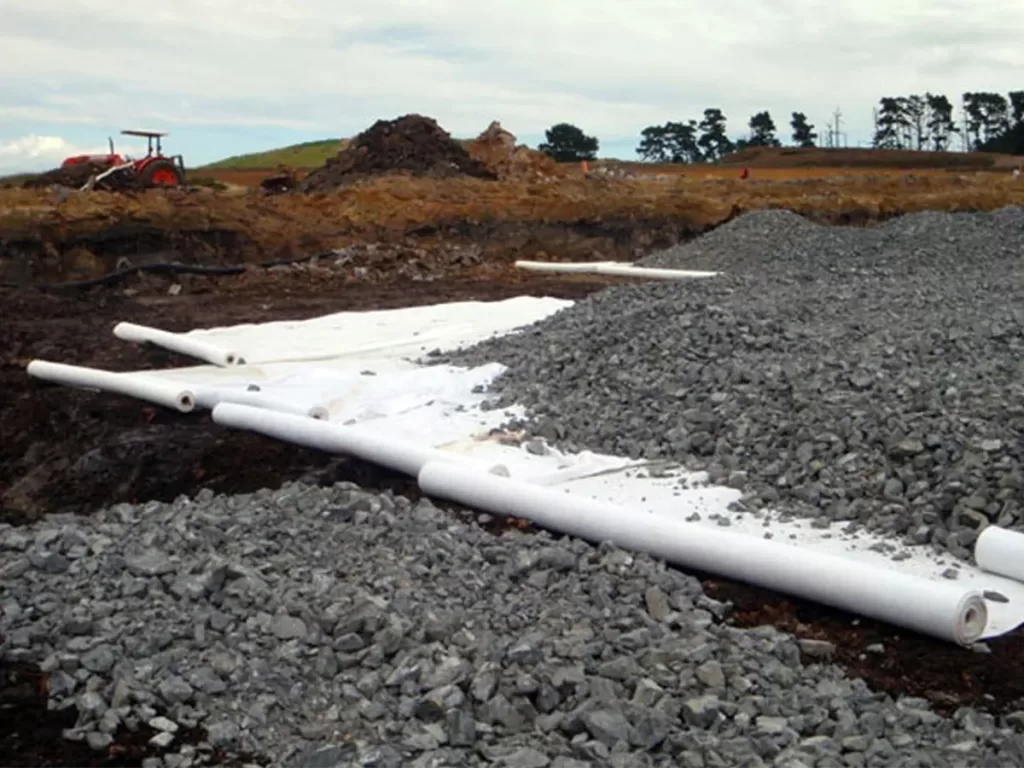In the vast landscape of civil engineering, one remarkable innovation has been gaining prominence for its versatility and effectiveness – geotextile. Often dubbed as the “fabric of the future,” geotextile has transformed construction practices globally. This article delves into the intricacies of geotextile, its applications, benefits, and why it’s becoming indispensable in modern engineering projects.

What exactly is geotextile?
Definition and Composition:
- Geotextile: A permeable fabric made from synthetic materials such as polypropylene, polyester, or polyethylene.
- Types: Woven, non-woven, and knitted based on the manufacturing process.
Purpose:
- Filtration: Prevents the movement of soil while allowing water to pass through.
- Separation: Maintains the separation of different layers of soil.
- Reinforcement: Increases soil stability and provides support.
- Protection: Protects geomembranes from puncture.
Applications:
- Road Construction: Used to stabilize roads and prevent mixing of soil layers.
- Erosion Control: Placed on slopes and embankments to prevent soil erosion.
- Drainage Systems: Used in drainage trenches and around drainage pipes to enhance water flow while preventing soil clogging.
- Landfills: Acts as a barrier and protects against leachate contamination.
What are the primary applications of geotextile?
Geotextiles are versatile materials used across various industries due to their beneficial properties like filtration, separation, reinforcement, protection, and drainage. Here are the primary applications in different sectors:
Construction
Road Construction:
- Separation: Geotextiles are placed between soil layers to prevent the mixing of different soil types, which helps maintain the structural integrity of roads.
- Reinforcement: They provide additional strength to road foundations, distributing loads and reducing rutting.
Erosion Control:
- Slope Protection: Geotextiles are used on slopes to prevent soil erosion by stabilizing the soil and promoting vegetation growth.
- Riverbank Protection: They help protect riverbanks from erosion caused by water flow and waves.
Environmental Protection
Landfills:
- Liner Protection: Geotextiles are used as a protective layer over geomembranes to prevent punctures from waste materials.
- Filtration and Drainage: They facilitate the drainage of leachate while preventing soil contamination.
Coastal and Waterway Protection:
- Geotextile Tubes and Bags: These are filled with sand or slurry to create barriers that protect shorelines from erosion and flooding.
Agriculture
Soil Stabilization:
- Weed Control: Geotextiles are used as ground covers to prevent weed growth, reducing the need for chemical herbicides.
- Soil Moisture Retention: They help maintain soil moisture levels by reducing evaporation, which is beneficial for crop growth.
Drainage Systems:
- Subsurface Drainage: Geotextiles are used in drainage systems to filter out soil particles while allowing water to pass through, preventing waterlogging in fields.
Other Sectors
Mining:
- Heap Leaching Pads: Geotextiles are used to protect geomembranes in heap leaching operations, which are used to extract precious metals from ore.
- Tailings Management: They help in the filtration and containment of mine tailings.
Sports and Recreation:
- Artificial Turf: Geotextiles are used as a base layer for artificial turf installations to provide stability and improve drainage.
- Golf Courses: They help in the construction and maintenance of golf course greens and bunkers by preventing soil erosion and improving drainage.
Geotextiles are essential in various fields for their ability to separate, filter, reinforce, protect, and drain. Their applications range from road construction and erosion control to landfill protection, agricultural enhancement, mining operations, and recreational facility maintenance.

What are the benefits of using geotextile in construction?
The utilization of geotextile offers several advantages. Firstly, it enhances the structural integrity of the construction by providing reinforcement and stabilization to the soil. Secondly, it acts as a barrier, preventing the intermixing of different soil layers and ensuring proper drainage. Moreover, geotextiles are cost-effective and environmentally friendly alternatives to traditional construction materials. They reduce the need for heavy machinery and excavation, minimize soil erosion, and promote sustainable construction practices.
How does geotextile contribute to sustainable engineering?
Geotextile plays a pivotal role in promoting sustainability in engineering projects. By reducing the reliance on natural resources and minimizing construction waste, geotextiles contribute to environmental conservation efforts. Additionally, their versatility and longevity extend the lifespan of infrastructure, reducing the frequency of maintenance and repair activities. Furthermore, geotextile solutions facilitate eco-friendly construction practices, aligning with the principles of sustainable development and resilience against climate change impacts.
Geotextile represents a groundbreaking advancement in civil engineering, offering innovative solutions to a myriad of construction challenges. Its versatility, durability, and eco-friendly properties make it an indispensable component in modern infrastructure projects. As the world continues to embrace sustainable development practices, geotextile emerges as a cornerstone in building resilient and environmentally conscious infrastructure for the future.
